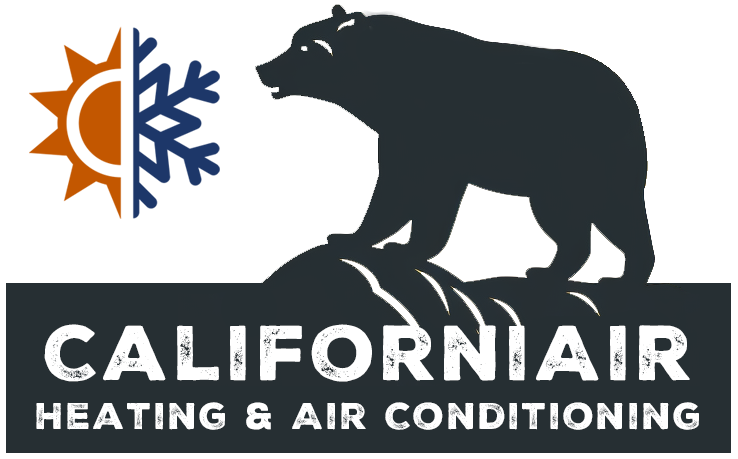Table of Contents
As the summer sun heats up the charming streets of the Bay Area and Silicon Valley, residents and business owners alike seek respite in air-conditioned comfort. However, when it comes to historic buildings, achieving this modern convenience while preserving their unique character can be a challenge. At CaliforniAir Heating and Air Conditioning, we understand the delicate balance between efficiency and preservation, especially in culturally significant structures. In this article, we delve into the intricacies of integrating efficient air conditioning solutions into historic buildings without compromising their heritage.
Historic buildings in cities such as San Jose, Santa Clara, and beyond hold immense cultural and architectural value. Maintaining their integrity while ensuring they remain comfortable in contemporary climates requires specialized knowledge and expertise. Whether you’re a property owner looking to update your HVAC system or an architect tasked with retrofitting a historic landmark, understanding the best practices and options available is crucial.
Understanding the Challenges in Historic Building AC Installation
Structural and Architectural Constraints
Historic buildings often feature unique architectural elements that pose significant challenges. These include thick walls, limited space for ductwork, and fragile materials that require careful handling. Implementing an HVAC system in such environments demands a customized approach that respects these constraints.
Regulatory Compliance and Preservation Standards
Maintaining the historical authenticity of a building often means adhering to stringent local, state, and federal preservation standards. In California, agencies like the Office of Historic Preservation (OHP) set guidelines to ensure that the architectural and historical integrity of these buildings remains intact during any modernization effort.
Innovative AC Solutions for Historic Buildings
Ductless Mini Split Systems
Use Case: Ideal for buildings with limited space for traditional ductwork.
Ductless mini split systems are an excellent solution for historic properties because they require minimal structural alterations. These systems consist of an outdoor compressor and one or more indoor air-handling units connected by a conduit. The installation process is less invasive, helping preserve the building’s original architecture.
Benefits:
– High energy efficiency
– Individual zoning capabilities
– Minimal impact on interior and exterior aesthetics
Variable Refrigerant Flow (VRF) Systems
Use Case: Suitable for larger historic buildings requiring flexible climate control.
Variable Refrigerant Flow (VRF) systems offer a flexible and energy-efficient solution for historic buildings. These systems can simultaneously heat and cool different zones, making them ideal for structures with diverse usage patterns and occupancy levels.
Benefits:
– Energy efficiency: VRF systems can reduce energy consumption by up to 30% compared to conventional HVAC systems (source: U.S. Department of Energy).
– Flexibility: Ability to tailor temperature settings for different zones.
– Minimal disruption: Installation requires fewer alterations to the building’s structure.
High-Velocity HVAC Systems
Use Case: Perfect for buildings where maintaining traditional aesthetics is critical.
High-velocity HVAC systems use smaller, flexible ducts that can be threaded through existing wall cavities, reducing the need for extensive remodeling. These systems are ideal for historic properties where preserving the original appearance is paramount.
Benefits:
– Discreet installation with small outlets and narrow tubing
– Efficient cooling and heating
– Reduced need for extensive construction work
Best Practices for Balancing Efficiency and Preservation
Conduct a Thorough Assessment
Before undertaking any HVAC project in a historic building, a detailed assessment is essential. This involves understanding the building’s layout, existing insulation, and potential points of thermal inefficiency. Consulting with experienced professionals, like those at CaliforniAir Heating and Air Conditioning, ensures a comprehensive evaluation and informed decision-making.
Collaborate with Preservation Experts
Working closely with architects, historians, and preservation experts helps align HVAC solutions with preservation goals. This collaborative approach ensures that the chosen system complements the building’s historical value while meeting modern comfort standards.
Prioritize Energy Efficiency
Energy efficiency is crucial in reducing operational costs and environmental impact. Modern HVAC systems, such as VRFs and ductless mini splits, offer advanced technologies that enhance energy efficiency. Additionally, incorporating programmable thermostats and regular maintenance schedules ensures optimal performance.
Maintain Ongoing Maintenance
Regular maintenance of HVAC systems in historic buildings is imperative to sustain their efficiency and longevity. Scheduling routine inspections and addressing minor issues promptly prevents costly repairs and prolongs the lifespan of the equipment.
Summary
Balancing efficiency and preservation in historic buildings requires specialized expertise and innovative solutions. At CaliforniAir Heating and Air Conditioning, we bring decades of experience in delivering tailored HVAC services that respect the unique characteristics of these cherished structures. From ductless mini splits to VRF systems, our solutions prioritize both comfort and conservation.
For expert advice and quality service in areas spanning Santa Clara County to Monterey, contact CaliforniAir Heating and Air Conditioning at (408) 705-8761 or email us at info@calhvac.com. Let us help you preserve the past while enjoying the comforts of the future.
FAQs
Absolutely. Technologies like ductless mini splits and high-velocity HVAC systems are designed to minimize structural alterations, preserving the building's integrity while providing modern comfort.
VRF systems provide energy efficiency, flexibility, and minimal disruption during installation, making them ideal for larger historic buildings with diverse heating and cooling needs.
Collaborating with preservation experts and HVAC professionals experienced in historic buildings is key. They can help navigate regulatory requirements and recommend systems that align with preservation goals.
Yes, various federal and state incentives are available for energy-efficient upgrades in historic properties. Researching programs like the Federal Historic Preservation Tax Incentives can provide valuable financial support.
Regular maintenance, ideally bi-annually, is recommended to ensure optimal performance and longevity. Professional inspections help identify and address issues before they escalate.

